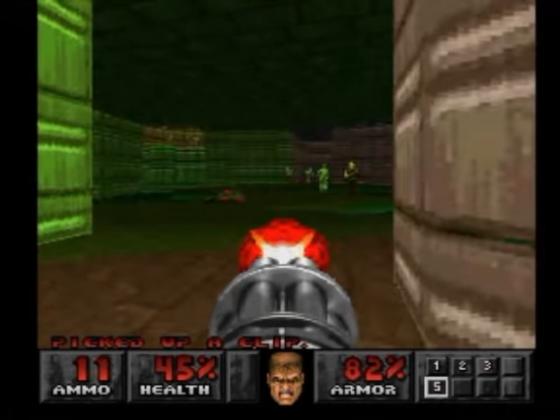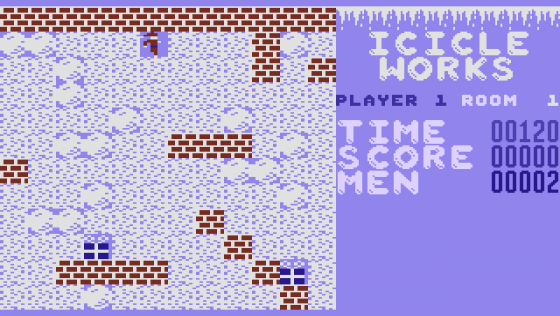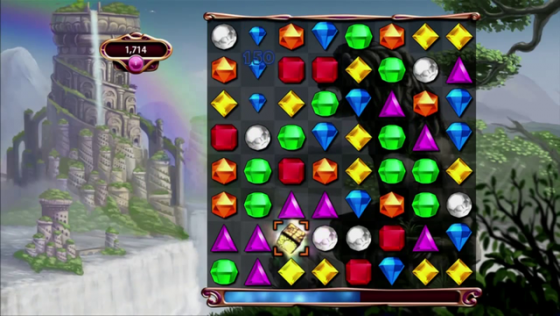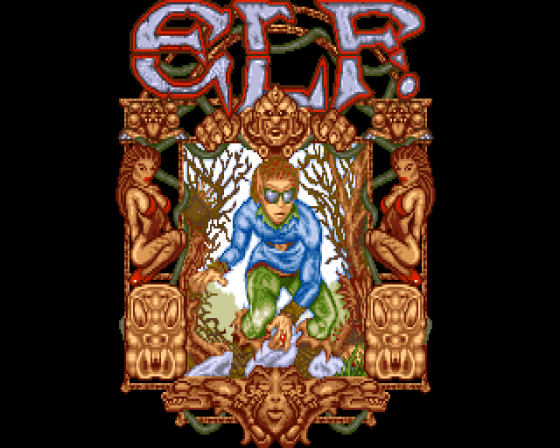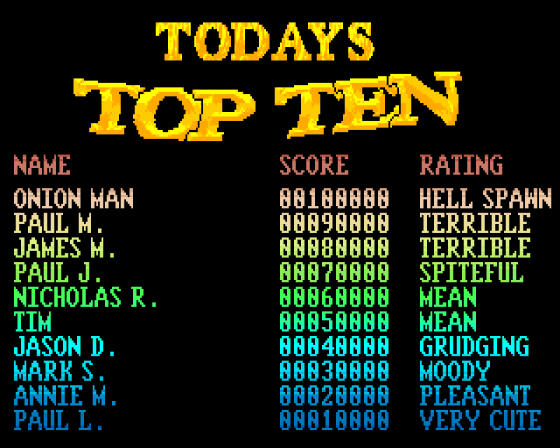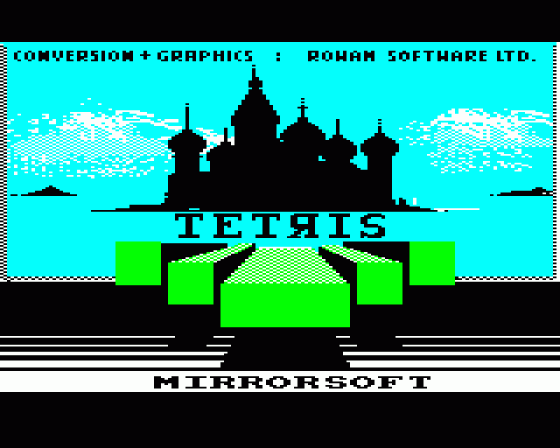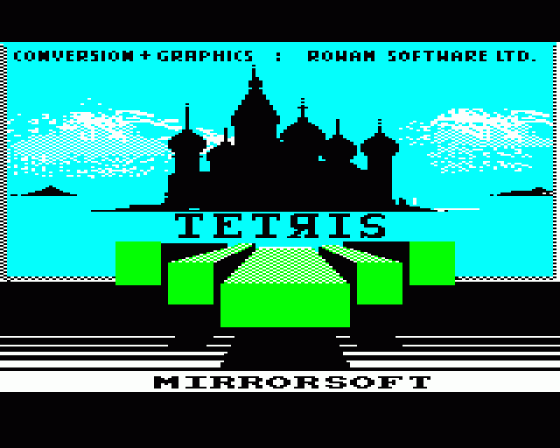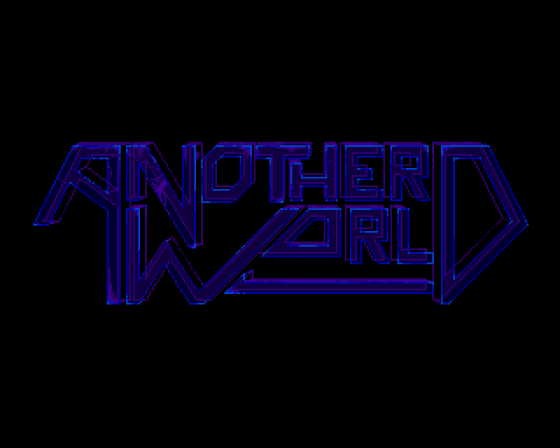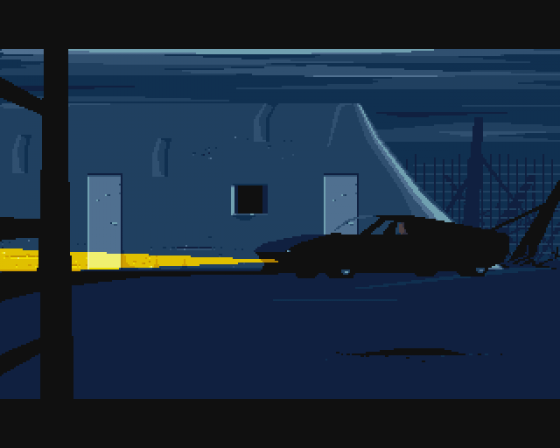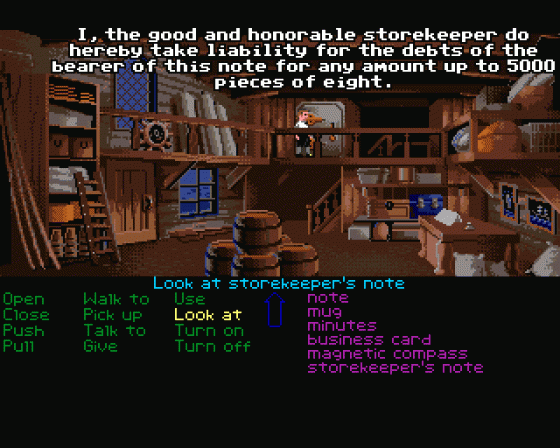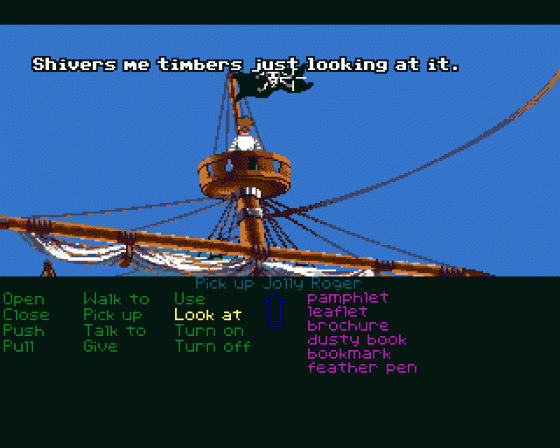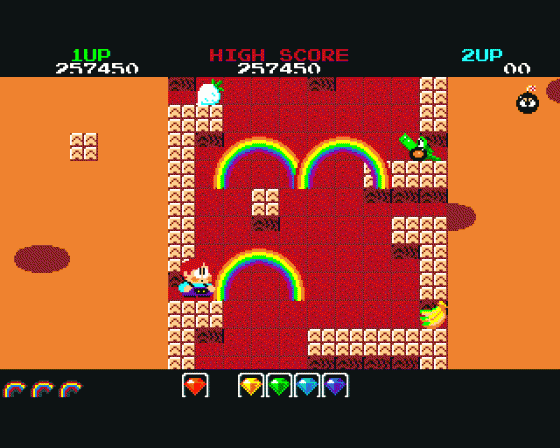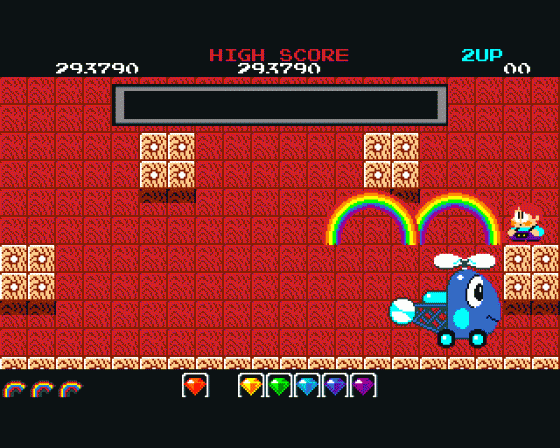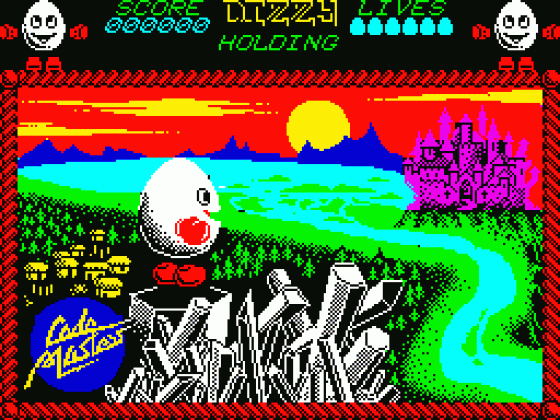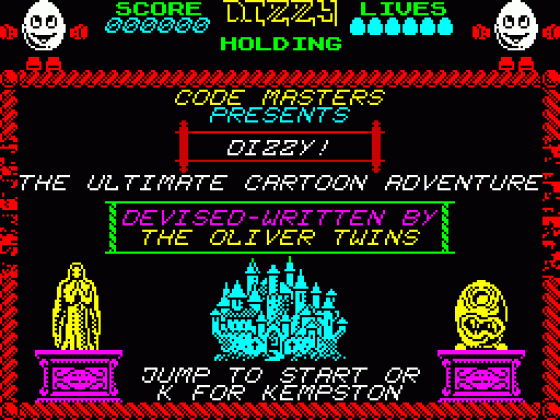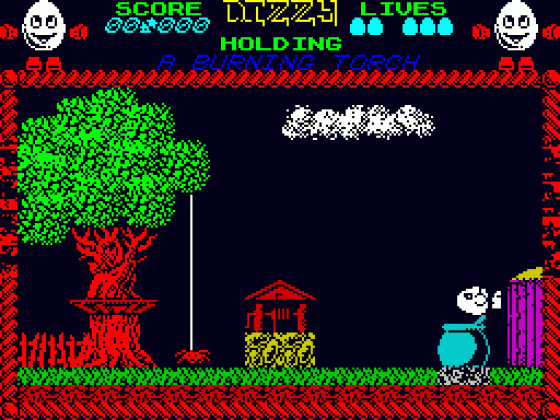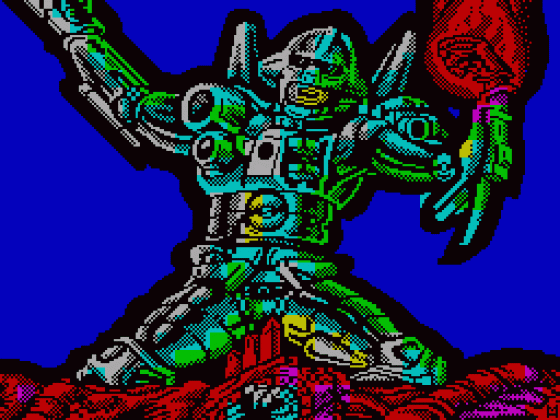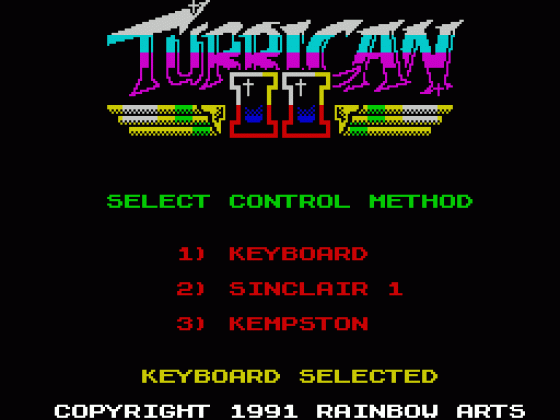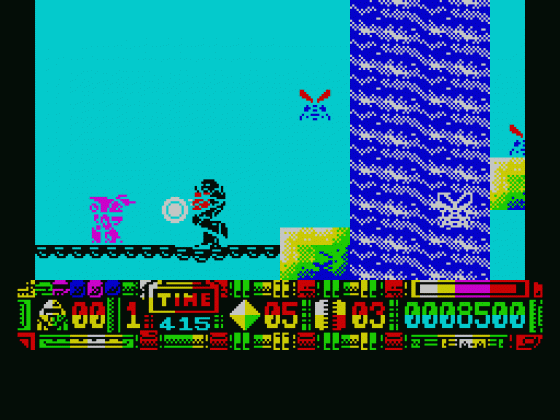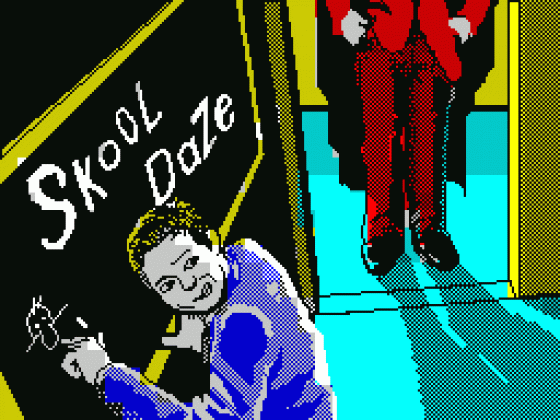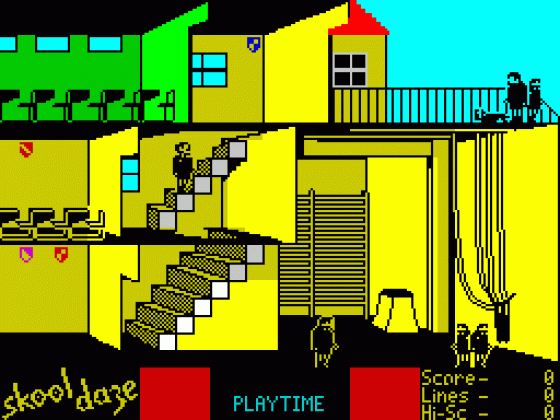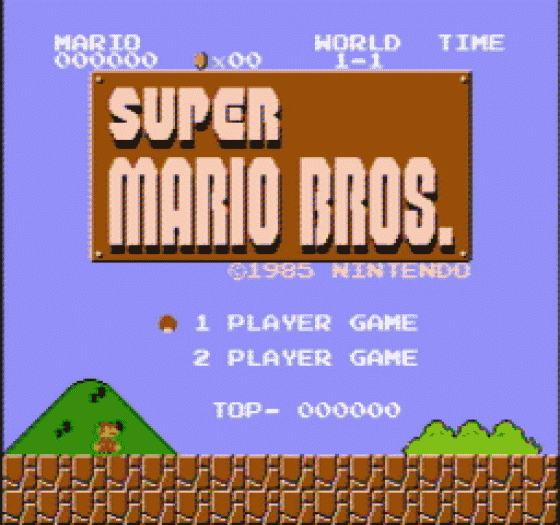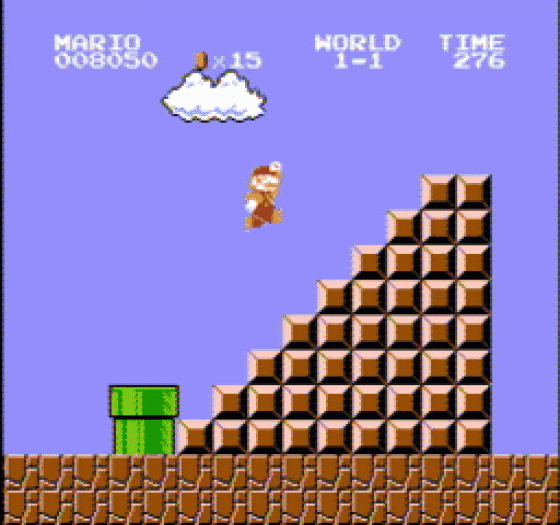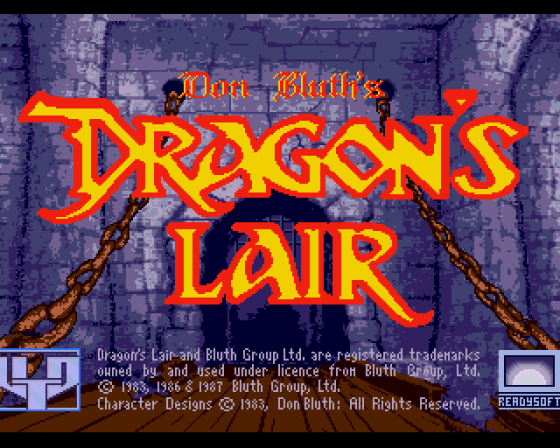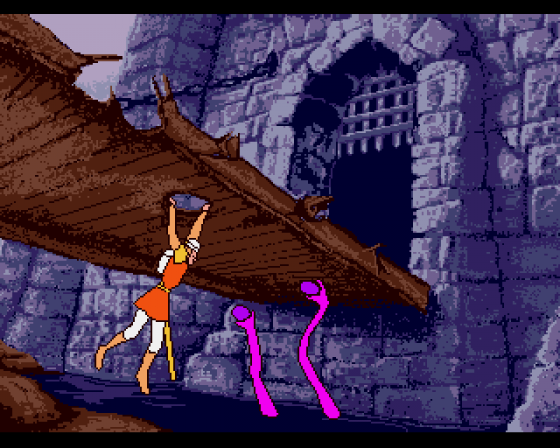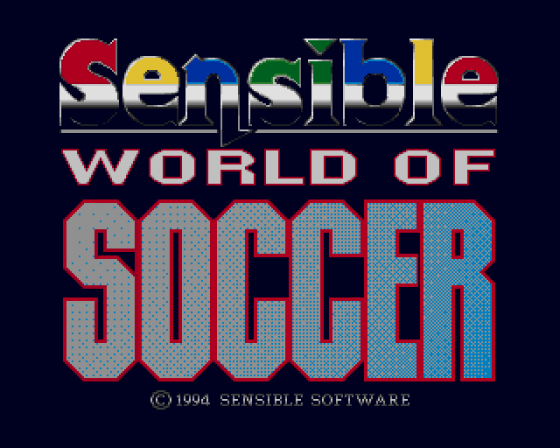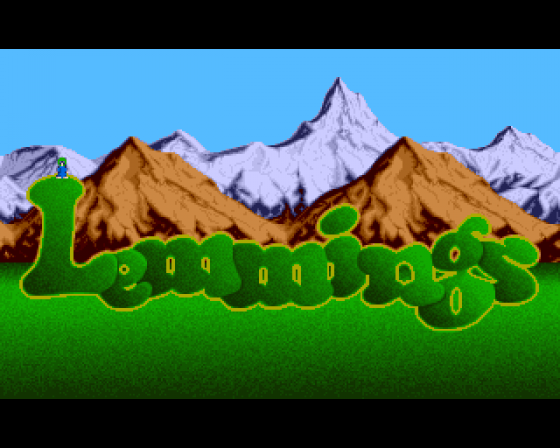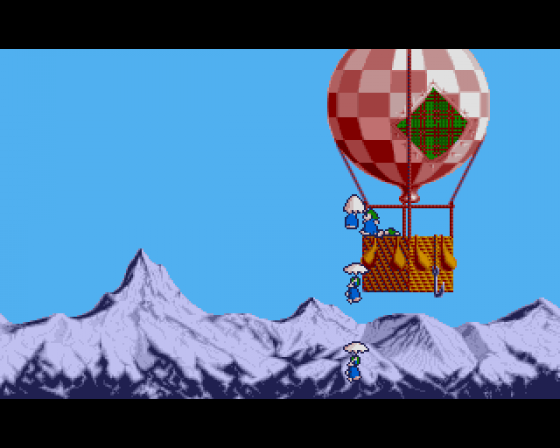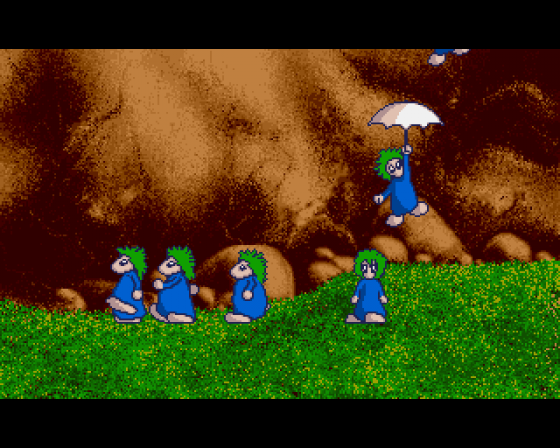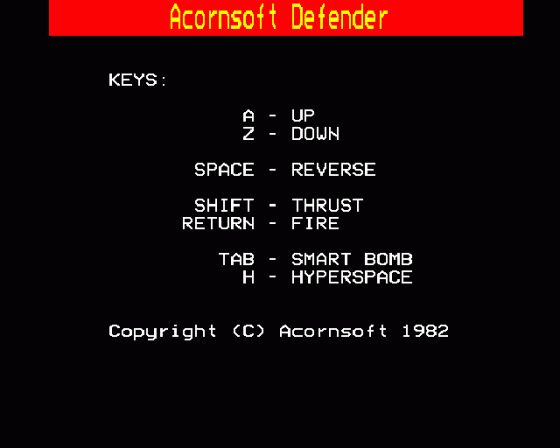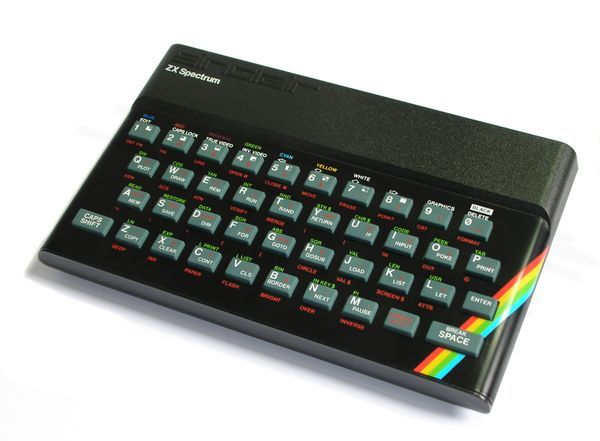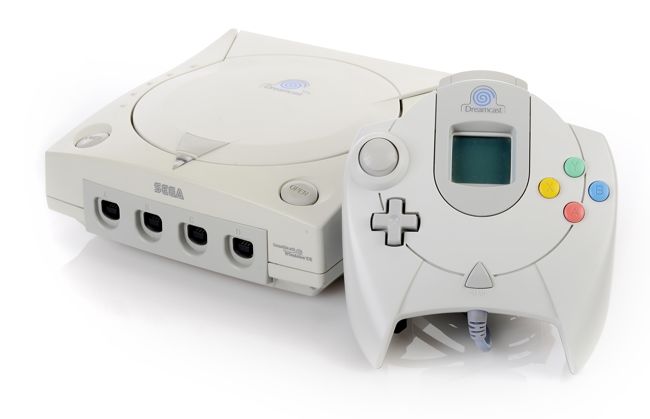
Micro Mart
 24th November 2005
24th November 2005
Categories: Retro Gaming
Author: Alex Dale
Published in Micro Mart #878
Gamers, we're told, have never had it so good. Yet many are winding back the clock in their search for videogame nirvana. Alex Dale examines the phenomena of retro gaming...
Back To The Primitive
Doubtlessly, few people twitch when they see 'golden oldies' such as The Beatles sharing iPod space next to the Arctic Monkeys. Similarly, a DVD re-release of, as an example, Citizen Kane would hardly be likely to incite an angry mob. But try to play an anthology of old games on your state of the art PC? Now that really does set the cat among the pigeons.
More than any other, the computing and video game industry is one that thrives on looking toward 'the next big thing'. And on the surface of it, with due cause; they say the industry is in its infancy, but it sure did find its feet quickly. The progress has been outstanding; in under three decades, gaming has metamorphosed from a niche hobby, played out primarily in dusty old arcades, to what it is today; a multi-million business that, due in part to the involvement of Sony and friends, has crossed into the mainstream and reputably gathers more revenue per annum than the film industry these days.
And, as much as it has grown in size, the technology has ballooned in the same proportion. It wasn't so long ago that codes for entire games were given away in magazines; even less since home-made games were readily available on the thriving public domain scene. It seems a world away from today's Hollywood-esque games, with their cinematic cut scenes, all-star cast lists and development teams running into the hundreds. In a sense, it is.
Part Of The Process
The progress shows no signs of letting up, either. With the impending release of the Xbox 360, consoles that were cutting edge just a few years ago are now hopping aboard the good ship Obsolete, while both the DS and the PSP, for various reasons, are changing the way we think of handheld games.
But, ahh, dear PC gamers; was that snickering I heard at the back there? Perhaps a look in your wallet will change your tune.
Nowadays, a decent processor and graphics card is mandatory, not a luxurious extra. Yup, keeping your PC current with current gaming trends is a constant game of one-upmanship. Still, it's all for a good cause, right? We're told we've never had it so good. Games are longer, more involved, prettier and more cinematic than ever before; after a quick go on today's Far Cry, who'd want to go back to 1993 and play Doom? Plenty of us, that's who!
You don't need to be a professional etymologist to understand what 'retro gaming' is about, but understanding why it's so popular here in 2005 is an altogether different proposition. It's commonly assumed that this renewed interest in these 'retrogames' is borne from sheer nostalgia - and it's not surprising because despite the fact that computer gaming can be traced back to the early 1960s, it was in the late 1970s and early 1980s where their popularity really started to explode. And it's these times at which the majority of today's PC gamers will have first fallen in love with the hobby. It's those same rose-tinted specs which deceive you into thinking that bidding for Transformers on eBay is suddenly a really good idea; after all, who can forget the first time that swirling maelstrom of noise and colour was in your control?
I do; it was Icicle Works on the Commodore 16/Plus 4, and it was terrible. I suspect that for a great many, the nostalgia kick goes little further than a few emulation experiments. It doesn't explain why people like me have gone to great lengths to set up an Amiga A500 with an extensive back catalogue. But if not for nostalgia, then why go retro?
The main debate stems from what actually is deemed 'retro' - the general consensus is that it encompasses every format that is no longer actively supported, from the early Odyssey and Atari systems through to recent flops like the Wonderswan. However, this as a definition is clunkier than a dozen 3DOs. I would prefer to offer that the mentality of retro gaming is more an ideology of a way gaming should be, most commonly defined as one that values substance over style - while there have always been games that looked great but played horrifically (Dragon's Lair being an early example), few would deny that games were on the whole tighter twenty years ago than they were today.
They had to be. On the home computers, they had no pretty graphics to hide behind. In the arcade, they had to be fun, or they lost their custom after the first twenty pence. Nowadays, it's so much easier to slap a sexy trailer on the web and watch the money roll in. A pity.
Emulators: Where You Stand
By far the commonest way for people to play retro games is through emulators - a program that emulates the architecture of another piece of hardware, allowing you to run software from pretty much any format - from the Spectrum to the Xbox - on your PC. Despite its popularity, playing old games in this way is by and large illegal. Here's where you stand.
Emulators themselves are fine to use - many firms give up the copyright of their old games for use on them, and many modern compilations - including console ports - are actually running on MAME.
However, the ROM images used to play the games are another matter. Although many critics claim that as software companies stop using and selling a great many games, that they have become abandonware. However, this does not ring true - and now companies, realising that they now find themselves competing against their own back catalogues, are only now starting to crack down on emulators.
In practice, emulators are great; naturally the conversions are spot-on, and due to the open nature of the ROMs, obscure Japanese RPGs can be translated and enjoyed by the rest of the world for the first time. But, it's important to realise the legal implications.
The myths about emulation include the one that it's absolutely fine to use a ROM as long as you delete it from your hard drive within 48 hours. This is taken as fact, despite having no legal footing. Another is that it's okay to use a ROM if you own the original game. This is also not true, as running a program intended for another format on your PC is considered unlawful duplication.
The only concrete advice when it comes to emulators is: exercise extreme caution.
Back To The Future
Retro gaming hasn't quite emerged from cult status yet, but it's certainly come out of its burrow and sniffed at the mainstream a couple of time over the years. We only have to look at the release schedule for the latest platforms this Christmas to see that the demand is there. Finally reacting to the popularity of emulators, Taito, Temco, Midway, Atari, Sega and others have all recently launched compilation packages of their 1980s arcade hits, and weird controllers apart, Nintendo has made retro gaming the primary focus of their upcoming Revolution machine.
It's incredibly easy to dismiss this as a case of major publishers merely pickpocketing their back catalogue and re-releasing already-written code at a minimum of expense; but it's about more than that. One look at the boxes alone tells you it has to be. The wording - of 'classics' and 'treasures' - suggests something intangible, something lost to gaming forever. The art and font on the box harks back to an unforgettable era that the world has somehow forgot. The screenshots are coarse yet vivid in the same breath, somehow more real than a million texture-mapped buildings. To a certain breed of gamer, these compilations represent everything that no longer is in a hobby which has changed beyond all recognition. It's no surprise that to the retro gamer, these compilations are only of use if they are more pastiche than parody.
No two ways about it, retro gaming is a growing cultural phenomena. It's not just in the growing number of retro events such as the Classic Gaming Expo UK, either; computer games as they used to be are now part of the general public's conscience, as evidenced by the proficiency of retro t-shirts displaying the Atari logo, classic Mario characters and the like. Considering that gaming t-shirts have long been considered the modern-day equivalent of the leprosy bell (take a walk down the road in a 'The Sims' tee if you don't believe me), we've clearly got somewhat of a counter-culture on our hands.
But a counter-culture for what purpose? The retro gaming community doesn't have a standardised charter, but on the whole they have a unified sense of purpose; to spread the word that games, well - they aren't as fun as they used to be, are they? Now that might seem like an obscene statement to make if you placed Pro Evolution Soccer 5 next to, say, Anco's 1990s hit Kick Off 2, but that's completely missing the point; of course the new games are faster, more involved, and generally better. But when it comes down to it, the expansion of the games industry from student's bedrooms to gargantuan art studios in the 1990s has come at a severe price. Yes, games are better now than they were twenty years ago, but strewth, on the whole they're soulless and fiddly, mere husks of the games we thought we'd see all those years ago when 3D environments were but a pipe dream.
So without further ado, I present to you a list of ten reasons why a great many of us still favour the oldies - what it is they have to offer that contemporary gaming doesn't. Call it the first Retro Gaming Charter, if you will. Just please notice the lack of the word 'nostalgia' in there anywhere.
1. Accessibility
It's easy to forget that, for a novice, the controls of a fighter jet look less complicated than your standard modern-day joypad. Bill Gates, as ever, knows where the party's at - with the Xbox 360, Microsoft has paid special attention to the Live Arcade feature, which enables 360 owners to download creaky old games such as Smash TV and Gauntlet onto their next-gen console - thus opening up games to a whole new audience. You'd be amazed how many people there are - my ex-flatmate included - who completely ignore games like Half-Life 2, but go crazy if presented with the chance to play Bejeweled. Modern games are great - as long as you have time on your side.
2. Individuality
In 1991, Ocean released a platformer called Elf on the Amiga. Elf, as you may recall, was produced by Nirvana Systems, a fancy way of saying 'a few guys who have just finished University'. Elf as a game was a standard flick- screen affair, but what made it stand out was the love that obviously went into making it.
Elf was designed, first and foremost, with the gamer's experience in mind. It's always the things of no real consequence that matter; from the 'hints' available in the game's shop, that are little more than healthy lifestyle tips, to the ability to try to 'bribe' passers-by with chickens and the like.
The point is, groups of small individuals will have more freedom to experiment in their games than a giant development team who are content to sell the same product to as many people as possible worldwide.
3. Instinctive Gameplay
With few exceptions, the days when you could just pick up and play a game are over. At their best, games should take a second to learn, and a lifetime to master. This applies equally to a puzzle game like Tetris or Columns as it does a platformer like Bubble Bobble or a fighter like Street Fighter II.
Even straightforward racing games treat you as if you don't know what a car is these days, serving up a constant bombardment of tutorials for even the simplest tasks. Most frustratingly, it isn't even a case of the game being difficult to learn, indeed, often this isn't the case at all. It's just a thinly veiled attempt at trying to make the game seem worth its price tag by forcing you to view all that it has on offer, early doors. Honestly, if you have to tell someone who's likely played games all their life what to do, then it's a sure sign that you're doing something wrong.
4. Imagination
Now this is a real personal bugbear. As far back as Space Invaders and Galaxian through to R-Type, Shadow Of The Beast and Another World, games used to be about making the impossible happen.
And quite rightly, too; gaming is an art form. In the hands of the right developer, we can be transported back in time, into futuristic settings, into other worlds. We can be free of gravity - with the technology we have now, the limit is, quite literally, your imagination. So what do we get? Endless war sims, 'gangsta' games and new consoles that are judged on how realistic the blades of grass in the latest FIFA game look. The public's reaction? Constant moaning in online forums about how they want 'the grass to shuffle as they walk through it'. Modern world, you disappoint me.
5. Humour
When was the last time a game made you laugh? No, really. I'm asking you, because the majority of long-term gamers who ponder that question will often shape their mouth in an 'M' shape as if to say 'Monkey Island', before remembering it was released almost fifteen years ago. Unfortunately, the constant quest for realism, as outlined above, has rendered the vast majority of today's offerings as po-faced and stoic as they come. Do you remember when gaming was supposed to be fun? It was around the time International Karate Plus was released in 1987. At first glance a straight-laced fighter, pressing 'T' on the keyboard would make your opponents' kecks fall down, allowing you to kick him into next week. We think this mode should make a comeback in the next Tekken or Virtua Fighter installments, but we aren't holding our breath. Or, indeed, our belts.
6. Depth
You're going to need convincing on this one, I can tell. But the simple fact of the matter is, nowadays gaming, for all its grandeur of depth, is very much an on-the-rails experience. It's not that we as a breed have lost that instinctive desire to explore - the success of Grand Theft Auto disproves that - it's simply that having spent so much money developing the game, they're keen to leave nothing to chance - you simply have to see everything. But if we take Taito's 1980s coin-op hit Rainbow Islands - now there's a game - at first glance, that is as simple as they come. Simply build a rainbow bridge to the top of the screen without getting killed. But below that it is devilishly involved - and it won't give you much in the way of hints. Killing an enemy a certain way would turn it into a gem - the colour of which was determined by where horizontally on the screen its corpse landed.
Collecting these were the only way of unlocking the final three islands. What's more, the game would continuously keep track of what you achieved and how, and with every 24th enemy killed, would present you with a special item, wholly dependent on how you played. I could take up the entire magazine with hidden features in Rainbow Islands - yet for something contemporary, like say Splinter Cell, the best I could muster is 'hide the dead guards so the others don't see them'.
So there we have it - Rainbow Islands has more depth than Splinter Cell, and you can quote me on that!
7. Respect
Remember what I was saying about contemporary games taking you for a fool? That's why they don't really bother to put any puzzles in there for you any more. A recent game, Fahrenheit, which sees you play the role of both a killer and the investigator, was heralded as a unique game, set to change the way we view gaming forever.
It isn't, of course, it's just an evolution of the old point 'n click games like Indiana Jones that we used to get in droves. It just seems clever because there isn't much in the way of intelligent games (spirit-crushingly dull 'tycoon' and strategy games aside) to compare it against. Yet, back in the 80s even 'kids games' like Dizzy demanded lateral thinking on the part of the player.
8. Form Over Function
The mortal wound of gaming is that we're never satisfied with what we have. PC or console, the mantra is 'upgrade, upgrade, upgrade'. Yet, more than anything else, it is this increase in power that fetters the creativity of games. The reasons for this are two-fold; production costs are so high and with lead-up times going into years, developers are loathe to take a risk on the niche titles that boomed or bust in the 1980s.
It was inevitable, really; where we once had a dozen unstable pirate radios, we now have Radio 1. Where we once have independent coders coming and going at a whim, we now have Electronic Arts.
It doesn't end there, though; developers seem to have it in their heads that a game needs to look like it's pushing the current hardware to its limits. This is a severe error. Platform games, for example, do not tend to work in 3D. Instead of the industry picking up on this, they continue to release bland platformer after bland platformer, practically killing off a genre that at one point was held as the benchmark by which a given format's catalogue was judged. Same deal with beat-'em-ups - Soul Calibur excepted. All this is fine if all you really wanted to play was first person shooters anyway; but I can't help but feel a pang of disappointment that, in refusing to embrace 2D any more, we're throwing the baby out with the bathwater and denying ourselves some terrific updates.
9. Identity
Do you remember The Getaway? Or perhaps Grand Theft Auto: London? Now, those were true British games, weren't they? We're joking, of course; as the Britishness of these games is about as convincing as Dick Van Dyke's accent in Mary Poppins.
A shame. Great Britain used to be such a powerhouse when it came to making games. We still are. Derby-based Circle Studios, for example, formed from the ashes of Core Design, have just had their first game, Without Warning, published worldwide by Japanese giants Capcom. As you'd expect from a British/Japanese collaboration, Without Warning is... as American as apple pie.
Wouldn't it be nice if games reflected our own culture and experiences again, the way Skool Daze on the ZX Spectrum once did? With so many games created right on our own doorstep, it's an insult that we no longer star in them. But the most important one of all is the last one...
10. Games That Know They're Games
Because games nowadays seem to be under the illusion that they're movies. They are not. While some semblance of a coherent plot is a plus point, is it really necessary to hire professional scriptwriters? I mean, think about it; what was the plot, really, in Super Mario World? Or Pac-Man? And even if lengthy exposition is needed, why not let the player interact?
Monkey Island featured lengthy cut-scenes, but allowed the person on the other end of the screen to feel as if was some purpose to their continued existence by letting them chose the path the conversations went in. Then again, Monkey Island was also funny. And imaginative. And accessible. And that's why people still harp on about it - because it's a really memorable game, not because it reminds us of the last time Liverpool won the league.
How We Got Here
Notice how the majority of the categories begin with the letter 'I'? Mass-marketing and the popularisation of gaming has taken the 'I' out of our hobby, guys. And it's doubtful that there's any way back.
At best, a computer game could - and perhaps should - be a piece of art, the same way a good movie or song can be; it shouldn't always be about what will sell the most copies. So who's to blame for the devolution of gaming into the junk-food diet of World War II sims and racers we have today? Under-ambitious developers? Overly-cautious publishers? Hyperbole from the gaming press? No, no and no.
The blame, my friends, lies squarely at the feet of the consumer. Even in the 16-bit era, graphics and a big, impressive box ruled supreme. Do you remember a big hulking beat-'em-up called Rise Of The Robots? Thousands of you must do; it sold like hot cakes on the back of some pretty graphics and an expensive ad campaign, even though it was quite possibly the worst fighter ever created (and we remember one Amiga magazine giving it a score in the 90s too!). Developers worldwide were taking notes. And that's why graphics and cut-scenes always come first today.
ICO developer Fumito Ueda was once credited with saying that video games can't be considered art as long as they're designed to make money. And there never really was a golden period as such. As far back as E.T. on the Atari 2600 and the deluge of terrible Ocean games on the 8-bit home computers, game companies have been content to fall back on expensive film licenses. And as Dragon's Lair and Space Ace on the Amiga will attest, pretty games have outsold many a playable game. So it's no wonder that companies decided to stick with the safe bet. But in 2005, there's still the odd gem buried among the dross. So next time you want a game, think very hard about whether you want to import that new, fresh Japanese Nintendo DS game, or if you want yet another racer for your PSP. Do think carefully; your choice will last a lifetime.
If however, you think that gaming died with the Dreamcast, then don't worry. Scattered around these pages is all you need to know if you're thinking of turning back the clock. Because what the oldies lack in bump-mapping, the charm they possess makes up for it in spades.
Classics
No idea where to start? Here are Micro Mart's recommendations...
Sensible World Of Soccer (Amiga)
Football games just didn't work with only one fire button. Until Sensible Soccer came along. The context-sensitive use of the fire-button made Sensible World Of Soccer a joy to play and the game has stood the test of time. Expect next year's update to fall short of expectations.
The Secret Of Monkey Island (Amiga/PC)
LucasArts revolutionised the previously text-heavy adventure genre with their point 'n' click interface, and the hilarious Monkey Island was the jewel in their crown. Funny, clever and addictive, it hasn't been bettered since.
Lemmings (various)
Tremendous puzzler that was not without its faults (such as a finicky cursor system), but was a prime example of the innovation you could expect from titles of its day.
Defender (Arcade)
Ancient yet addictive shoot-'em-up, which has you protecting humans on the ground from aliens. A flash version can be accessed from Midway's website (www.midway.com).
Comp & Circumstance
Don't have the space nor the inclination to fill your abode with ugly, creaking computers? No problem: there are plenty of compilations out there that will offer you the chance to play retro games on your state of the art PC. Allow Micro Mart to distinguish between the Classics and the Tragics...
Taito Legends (Price: £19.99)
Buy it for:
The most well known game on here is Space Invaders - the 1978 classic that everybody remembers. But Taito Legends' charm lies in the games time forgot. Bubble Bobble, Rainbow Islands and New Zealand Story hark back to an era when cute, Japanese platformers were nauseatingly cute and furiously addictive in equal measure.
Taito Legends is a strong compilation, with joy at every tum - from bizarre etch-a-sketch game Qix to the evil puzzler Plotting, it has something for everyone.
But don't load up:
Operation Wolf and Operation Thunderbolt were great in their day, but boy, shooters sure are better when you can move around on your own accord.
Namco Museum 50th Anniversary (Price: £29.99)
Buy it for:
Well, it's a strange one, this. Namco, the guys behind Ridge Racer, did indeed reach the big 5-0 in 2005, but for the first twenty years they mostly made rocking-horses. When they finally moved to the arcades, however, the Japanese firm were an instant hit. Names such as Galaga, Pac-Man and Pole Position are among the biggest in gaming history...
But don't load up:
...but only Pac-Man and possibly Dig Dug really stand the test of time.
I've always had a soft spot for 1987 shoot-'em-up Dragon Spirit, but I think you'll find the rest to be mostly filler.
Midway Arcade Treasures 1 (Price: £14.99)
Midway love us so much that they spoil us with three compilations... or do they?
Buy it for:
a fantastic retro experience, ranging from Super Monkey Ball's grandad, Marble Madness, through to the super-intense shooters Smash TV and Defender, before unwinding with the block-stacking puzzle game Klax. Superb.
But don't load up:
Well, Paperboy is beginning to show its age, but this is a tight compilation with little dead weight. You know what's coming, don't you?
Rating: 70%
Midway Arcade Treasures 2 (Price £14.99)
Buy it for:
If you always did have poor taste in fighting games, you'll love the inclusion of the original Mortal Kombat trilogy. Other than that, the closest we have to a highlight is Spy Hunter Il, and that in itself is so depressing I think I might cry.
But Don't Load up:
There is some pitiful, pitiful dross on show here, with interminable beat-'em-up Pit-Fighter the low water mark.
Midway Arcade Treasures 3 (Price £14.99)
Buy it for:
Firewood.
But don't load up:
Well, let's be reasonable, Super Off-Road isn't totally without merit. But Midway put all their eggs in their first basket, for sure.
Console Gaming
If you prefer your gaming on the consoles, there are also a number of additional compilations available for you this Christmas, including:
1. Capcom Classics Collection (Xbox/PS2, highlights include Street Fighter II, Ghouls & Ghosts, 50%) 2. Sega Classics Collection (PS2; highlights include OutRun, Virtua Racer, 70%) 3. Tecmo Classic Arcade (Xbox, highlights include Bomb Jack, the disc is also quite shiny, 10%)
Six Of The Best
By far the best way to truly experience retro gaming is to obtain the original console or computer. If this sounds horrifically expensive, don't fret: it isn't. It's usually extremely easy to pick up a working computer, although for the more obscure formats, peripherals such as power packs and joysticks can be troublesome to find. Remember that you can always find parts for old computers listed in Micro Mart - although retro-computing expos are a good place to find the more obscure items. If you're interested in starting a collection, here are six formats you shouldn't pass up.
ZX Spectrum (1984)
Tech Specs: 16-64k ROM, 16-128k RAM, 8-bit processor @ 3.50 MHz
The cassette-based Speccy was the first well-supported home computer, and is much-loved to this day despite being technically inferior to its 8-bit rivals, the C64 and the Amstrad. Sinclair's machine is famous for its rubber keyboard and rubbish graphics caused by 'attribute clash' - due to the clumsy way the Speccy stored pixel and colour information. Regardiess, the Spectrum is considered by many to be the 'daddy' of computer gaming.
Price Guide: Unit: £20-50 depending on specs & condition. Games: £Negligible
Nintendo Entertainment System (1985)
Tech Specs 16k RAM, 8-bit processor running @ 1.66 MHz
The collapse of the Atari consoles in the early 1980s was in part attributable to the well-marketed campaigns of the home computers, who emphasised the multimedia benefits of their formats. It would take something special to rejuvenate the reputation of the consoles. Although the Famicom, as it was known there, suffered hardware problems in Japan, it was good, with a solid library of games, including Super Mario Brothers and Zelda, which made the NES an international hit.
Price Guide: Unit: £15-30. Games: £2-8
Commodore Amiga A500 (1987)
Tech Specs: 512KB RAM (upgradeable to 1MB), 16-bit Motorola 68000 @ 7.09 MHz
Even at the dawn on the 16-bit era, gamers were worried that graphics would take precedence over gameplay. Despite a rocky start, the Commodore Amiga proved the doubters wrong, amassing a huge games library which ranks as among the most varied in history. Compatibility issues plagued the subseguent 500+ and 600 updates, and by the first true follow up, the A1200 in 1992, the IBM PC had stole Commodore's thunder.
Price Guide: Unit: £20-40. Games: Negiglible.
Sega Megadrive (1989)
Tech Specs: 16-Bit Motorola 68000 @ 7.61 MHz, + 8-bit Zilog Z80 @ 3.55 MHz
Here's why Microsoft, despite owning the most powerful current-gen console, have fallen over themselves to get the Xbox 360 out first; he who releases first, in general, wins (although Sega's own Dreamcast proved an exception). The Super Nintendo had an incredibie range of games and a strong fanbase, but the Megadrive had such a crucial head-start and was so aggressively marketed that it soon became the number one games console of its time. Add-ons such as the Mega CD and 32X, were less successful.
Price Guide: Unit: £10-20. Games: from £10 downwards
Neo-Geo (1991)
Tech-Specs: Motorola 68000 @ 12 MHz, Zilog Z80 @ 4MHz
The ultimate console for the retro gamer. Neo-Geo was akin to owning your own arcade, as the enormous arcade-style joysticks that came with it would attest to. Sadly, so did the £100+ price tag for its software, which is why Neo-Geo never escaped cult status.
Price Guide: Insane. Some games still fetch well over a hundred pounds.
Sega Dreamcast (1999)
Tech Specs: SH-4 RISC CPU @ 206 MHz 360 MIPS/1.4 Gigaflops
The Dreamcast was ahead of its time. A true innovator in the console field, Dreamcast was the first to feature an in-built modem, and with four controller ports and a visual memory unit, the Dreamcast was a step ahead of its rivals. Sadly, the failures of the Sega Saturn and Mega CD shook the public's confidence in Sega, and when the near-vapourware-esque announcement of the PlayStation 2 was made shortly before the Dreamcast's US release, the public abandoned the format in droves. A shame; it really is a cracking piece of hardware.
Price guide: £30 for the console. Games shops can hardly give the games away at the moment.
Handheld Chic
If you're looking to make money from your old collection, then forget your desktop formats - handheld is where it's at. And that's mostly because Nintendo's Game Boy systems have dominated the market since 1989 - only the recent release of the PSP threatens Nintendo's monopoly. Previous pretenders to the Game Boy''s throne - including the Neo-Geo Pocket, the Sega Game Gear and the Atari Lynx - suffered in comparison to the monochrome Game Boy due to either being too expensive, being too large, or having a battery life measurable in minutes. But perhaps the most collectable handhelds are Nintendo's short-lived Game & Watch systems - the LCD display games, popular in the mid-1980s, are now bona fide collector's items, with the rarer models, such as Flagman, going for hundreds! Bet you wish you hadn't flogged them at that car boot sale, right?
This article was converted to a web page from the following pages of Micro Mart #878.


